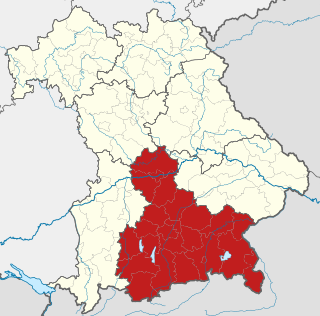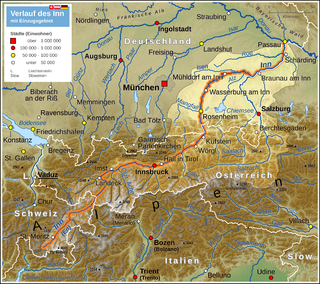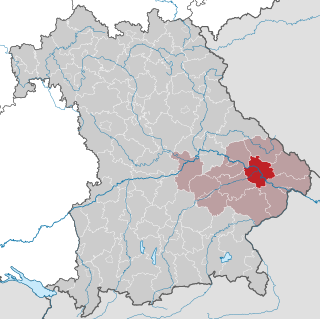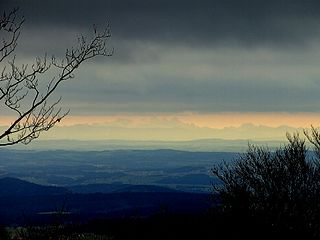
The Lower Bavarian Upland, Lower Bavarian Hill Country (German: Niederbayerisches Hügelland) or Lower Bavarian Hills, are part of the tertiary Hügelland or hill country [1] south of the River Danube and cover much of the land within the Bavarian province of Lower Bavaria in southern Germany. To the north it is bordered by the Gäuboden region and the Bavarian Forest; to the south by Upper Bavaria, to the east by the Lower Inn Valley and to the west by the Franconian Jura (Fränkische Alb). In the western part of the Lower Bavarian Hills lies the Hallertau, the world's largest hop-growing region. [2] It belongs to two of officially defined natural regions in Germany: the eponymous Lower Bavarian hills and the Isar-Inn Gravel Beds (Isar-Inn-Schotterplatten) and is sub-divided into the Danube-Isar Hills (Donau-Isar-Hügelland) and the Isar-Inn Upland (Isar-Inn-Hügelland) with the River Isar as the boundary. The hills continue over the border into Austria as the Upper Austrian Hills (Oberösterreichischen Hügelland).
Hügelland is a type of landscape consisting of low, rolling hills whose topography or surface structure lies between that of a lowland region and that of a more rugged hill range or low mountain range. The term is German and has no exact equivalent in English, but is often translated as "hill country", "hilly terrain", "upland(s)" or "gently undulating" or "rolling country", or "rolling countryside". It is derived from Hügel, a low hill or hillock and appears frequently as a proper name for this type of terrain.
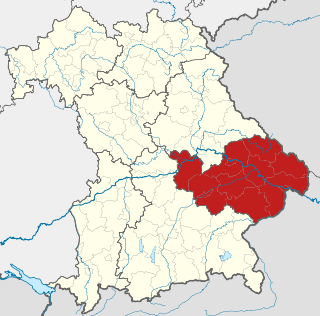
Lower Bavaria is one of the seven administrative regions of Bavaria, Germany, located in the east of the state.

Germany, officially the Federal Republic of Germany, is a country in Central and Western Europe, lying between the Baltic and North Seas to the north, and the Alps, Lake Constance and the High Rhine to the south. It borders Denmark to the north, Poland and the Czech Republic to the east, Austria and Switzerland to the south, France to the southwest, and Luxembourg, Belgium and the Netherlands to the west.
The larger centres of population in the Lower Bavarian Upland are Landau an der Isar, Pfarrkirchen, Eggenfelden, Bad Griesbach im Rottal, Ortenburg, Triftern, Rottenburg an der Laaber and Pfeffenhausen. The Lower Bavarian Spa Triangle (Niederbayerisches Bäderdreieck) is of particularly importance for tourism.

Landau an der Isar is the second largest town in the Lower Bavarian district, or Landkreis, of Dingolfing-Landau, in the state of Bavaria, Germany. It lies on the river Isar. In 2005, the population was around 12,950.
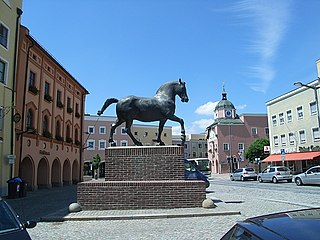
Pfarrkirchen is a municipality in southern Lower Bavaria Germany, the capital of the district Rottal-Inn. It has about 12,500 inhabitants and is an important school centre with about 10,000 pupils from all over Lower Bavaria. The town spreads over an area of about 52 square kilometers and lies approximately 377 meters above sea level. Pfarrkirchen lies at the small river "Rott", which gives the "Rottal" region its name. One of Pfarrkirchen's important industries include abattoirs which is due to the rural environment.


